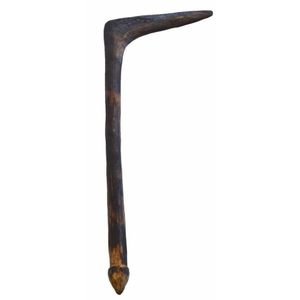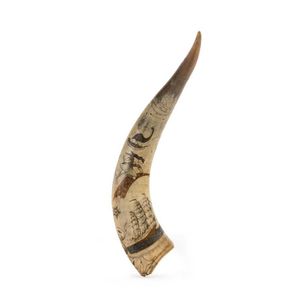Early Australian Parrying Shield with Zig-Zag Patterning
You must be a subscriber, and be logged in to view price and dealer details.
Subscribe Now to view actual auction price for this item
When you subscribe, you have the option of setting the currency in which to display prices to $Au, $US, $NZ or Stg.
- Manner of .... / Style of ..... - A cataloguing term where the item, in the opinion of the cataloguer is a work in the style of the artist, craftsman or designer, possibly of a later period.
- Patination / Patina - In broad terms, patination refers to the exterior surface appearance of the timber, the effect of fading caused by exposure to sunlight and air over the course of a century or more, changing the piece to a soft, mellow colour.
As patina is very difficult to replicate, it is one of the most important guides to determining the age of furniture.
Patina is also the term applied to the bloom or film found on old bronzes due to oxidisation.
This item has been included into following indexes:
-
Australian Aboriginal artefacts
- club / waddy / nulla nulla 300
- shields 250
Visually similar items

An Aboriginal Leangle club, circa early 20th century. The club has dark burnt patination. Length 75 cm. Provenance: Zanesville Museum of Art USA. Sold Webb's Auctions, New Zealand 19th June 2010.

A rare form of shield, New South Wales origin, carved hardwood. 19th century. 55.5 cm

A Scrimshaw horn decorated with emu, black swan and sailing ship, late 19th century, 51 cm long

A fine and early boomerang, Darling River, South West Queensland, 19th century, carved hardwood, reverse decorated with fine incised linear motif, 111 cm long. Provenance: Private Collection, United Kingdom (acquired at auction 1960s), thence by descent
